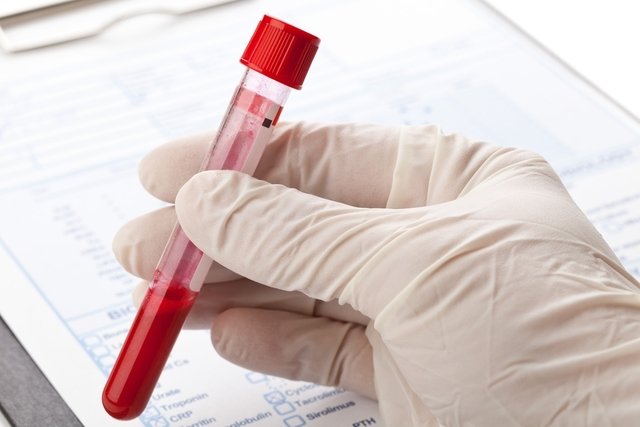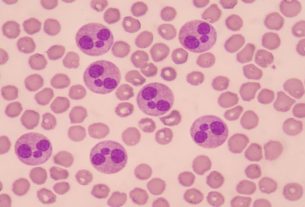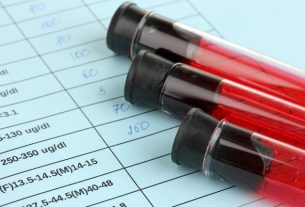The vitamin D test, also known as hydroxyvitamin D or 25(OH)D test, aims to check the concentration of vitamin D in the blood, as it is an essential vitamin for regulating phosphorus and calcium levels in the blood, having a fundamental role in bone metabolism, for example.
This exam is normally requested by the doctor to monitor vitamin D replacement therapy or when there are signs and symptoms related to bone decalcification, such as pain and muscle weakness, for example.
The vitamin D test is normally requested as a routine, and the doctor may recommend that it be carried out in conjunction with other tests, such as the measurement of calcium, PTH and phosphorus in the blood, especially when you want to investigate changes in the level of this vitamin.

What is it for
The vitamin D test is used to:
- Check vitamin D levels in the body;
- Diagnose vitamin D deficiency or hypervitaminosis D;
- Monitor vitamin D replacement therapy;
- Assist in the differential diagnosis of rickets, osteoporosis and osteomalacia.
This exam is usually recommended as a routine, however the doctor may also request it when there are signs and symptoms of bone decalcification, as vitamin D is one of the factors responsible for regulating the concentration of calcium and phosphorus, in addition to promoting bone mineralization. .
Furthermore, the vitamin D test is mainly indicated for people considered to be at risk, such as those over 60 years of age, who have a contraindication to sun exposure or who are not regularly exposed to the sun, pregnant women and breastfeeding women, people with endocrine disorders, people with kidney disease or malabsorption syndromes or people who use medications that can interfere with the process of formation and degradation of this vitamin.
This indication exists because this group of people are at greater risk of developing complications related to changes in the levels of this vitamin, and it is important that they are regularly monitored and treated according to medical recommendations, which are often done through vitamin supplementation. D. Learn more about vitamin D.
How the exam is done
To carry out the exam, it is not necessary to carry out any preparation, it is done by removing a small amount of blood, which is sent to the laboratory for analysis.
Vitamin D is present in the body in the forms of 25-hydroxyvitamin D and 1,25-dihydroxyvitamin D, both of which can be measured in a blood test. The measurement of 25-hydroxyvitamin D is mostly performed to identify vitamin D deficiency, while 1,25-dihydroxyvitamin D is normally requested for people with kidney disease.
What the results mean
According to the 2017 recommendation of the Brazilian Society of Clinical Pathology/Laboratory Medicine and the Brazilian Society of Endocrinology and Metabology (1)sufficient levels of vitamin D are:
- For healthy people under 60 years old: greater than 20 ng/mL;
- For people belonging to the risk group and over 60 years old: between 30 and 60 ng/mL.
Pregnant and breastfeeding women, people with restricted sun exposure, people with bone changes such as osteomalacia, rickets or osteoporosis, thyroid changes, people with autoimmune or chronic diseases, or who are using vitamin D hypovitaminosis are considered a risk group for vitamin D hypovitaminosis. medications that may interfere with the formation of vitamin D degradation.
Furthermore, it is determined that there is a risk of toxicity and hypercalcemia when vitamin D levels are above 100 ng/mL. In relation to levels considered insufficient or deficient, studies are being carried out with this objective, however it is recommended that people who present values below those recommended are monitored by a doctor and, according to the level identified, the most appropriate treatment is initiated.
Decreased vitamin D values
Decreased vitamin D values are indicative of hypovitaminosis, which can be caused by:
- Little exposure to the sun;
- Little intake of foods rich in vitamin D or its precursors, such as eggs, fish, cheese and mushrooms, for example. Discover other foods rich in vitamin D;
- Inflammatory bowel diseases;
- Rickets;
- Osteomalacia.
Furthermore, diseases such as fatty liver, cirrhosis and pancreatic insufficiency, for example, can also lead to insufficiency or deficiency of vitamin D. Know how to recognize the symptoms of vitamin D deficiency.
Increased vitamin D values
Increased levels of this vitamin in the blood are indicative of excess vitamin D, which occurs mainly due to the use of large amounts of vitamin D for a long period. Learn more about excess vitamin D.
Prolonged exposure to the sun does not cause hypervitaminosis, as the body can regulate the amount of vitamin D and when optimal concentrations are identified, it is indicated that the synthesis of vitamin D through sunlight is interrupted and, therefore, there are no toxic levels of vitamin D. vitamin D due to prolonged exposure to the sun.
Bibliography
- BRAZILIAN SOCIETY OF CLINICAL PATHOLOGY/LABORATORY MEDICINE AND BRAZILIAN SOCIETY OF ENDOCRINOLOGY AND METABOLOGY. Vitamin D Reference Ranges – 25(OH)D. 2017. Available at: <http://www.sbpc.org.br/wp-content/uploads/2017/12/PosimentaçãoOficial_SBPCML_SBEM.pdf>. Accessed on March 31, 2020
- HOLICK, Michael F. The Vitamin D Deficiency Pandemic: Approaches for Diagnosis, Treatment and Prevention. Rev Endocr Metab Disord. Vol 18. 2 ed; 153-165, 2017

Sign up for our newsletter and stay up to date with exclusive news
that can transform your routine!
Warning: Undefined array key "title" in /home/storelat/public_html/wp-content/plugins/link-whisper-premium/templates/frontend/related-posts.php on line 12
Warning: Undefined array key "title_tag" in /home/storelat/public_html/wp-content/plugins/link-whisper-premium/templates/frontend/related-posts.php on line 13



